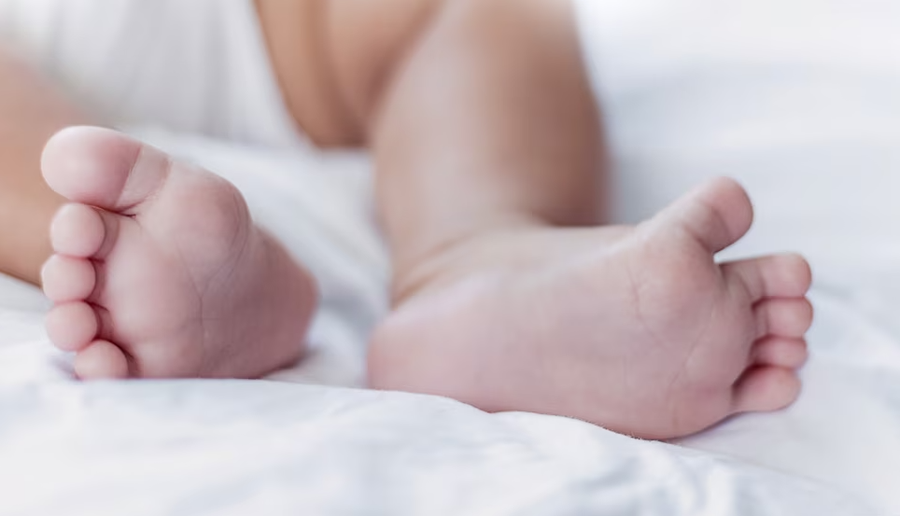
Eight healthy babies have been born in Britain with the help of an experimental technique that uses the DNA of three people, to help mothers avoid passing on rare and serious diseases to their children.
Most of the DNA is found in the nucleus of a cell and consists of genetic material inherited from both parents. However, a small portion of DNA is located outside the nucleus, in structures called mitochondria. Dangerous mutations in this portion can cause serious diseases in children, such as muscle weakness, seizures, developmental delays, organ failure, and death.
Testing during the in vitro fertilization process can usually identify whether these mutations are present. But, in rare cases, this is not clear.
Researchers have developed a technique that attempts to avoid this risk by using healthy mitochondria from a donor egg. They first reported in 2023 that the first babies had been born using this method, in which genetic material from the mother's egg or embryo is transferred to a donor egg or embryo with healthy mitochondria but without the rest of the original DNA.
“This is a significant achievement,” said Dr. Zev Williams, director of the Fertility Center at Columbia University, who was not involved in the study.
"Expanding reproductive options will give more couples the opportunity to pursue safe and healthy pregnancies."
With this method, the embryo contains DNA from three people – from the mother's egg, the father's sperm and the donor's mitochondria – and to allow it, the law was changed in the United Kingdom in 2016. This technique is also allowed in Australia, but not in many other countries, including the United States.
Experts from Newcastle University in Britain and Monash University in Australia reported in the New England Journal of Medicine that the technique was applied to fertilized embryos from 22 patients, and resulted in the birth of eight babies who appeared to be free of mitochondrial disease. One woman is still pregnant.
One of the babies born had slightly higher levels of abnormal mitochondria than expected, said Robin Lovell-Badge, an expert in stem cells and developmental genetics at the Francis Crick Institute. He added that this is not yet considered a disease-causing level, but should be monitored as the child develops.
Dr. Andy Greenfield, a reproductive health expert at the University of Oxford, called it “a triumph of scientific innovation” and stressed that the technique will only be used for a small number of women for whom other methods of avoiding genetic diseases, such as early embryo testing, are not effective.
Lovell-Badge stressed that the amount of DNA from the donor is negligible and does not affect the characteristics of the child. The DNA from the donated egg makes up less than 1% of the genetic makeup of the child born with this technique.
"If you get a bone marrow transplant from a donor ... you're going to have a lot more DNA from another person," he said.
In Britain, any couple seeking to have children with donated mitochondria must obtain approval from the state's fertility regulator.
As of this month, 35 patients have been authorized for this procedure.
Critics have raised concerns, warning that it is impossible to know what impact these new techniques might have on future generations.
“Currently, pronuclear transfer is not permitted for clinical use in the U.S., largely due to regulatory restrictions on techniques that induce heritable changes in the embryo,” Columbia’s Williams said by email. “Whether this will change remains uncertain and will depend on scientific, ethical, and political developments.”
For nearly a decade, the US Congress has included prohibitions in annual budget laws that prohibit the federal drug agency from reviewing requests for clinical research that involves creating or modifying embryos with heritable genetic changes.
But in countries where the technique is allowed, supporters say it could offer a promising alternative for some families.
Liz Curtis, whose daughter Lily died of a mitochondrial disease in 2006, now works with other affected families. She said it was devastating to hear that there was no treatment for her eight-month-old daughter and that death was inevitable.
She said the diagnosis “turned our lives upside down, and yet no one could tell us much – what this disease was or how it would affect Lily.” Curtis later founded the Lily Foundation in her daughter’s name to raise awareness and support research into the disease, including recent work at Newcastle University.
"It's something very emotional for families who don't have much hope in their lives," Curtis said./ REL (A2 Televizion)











